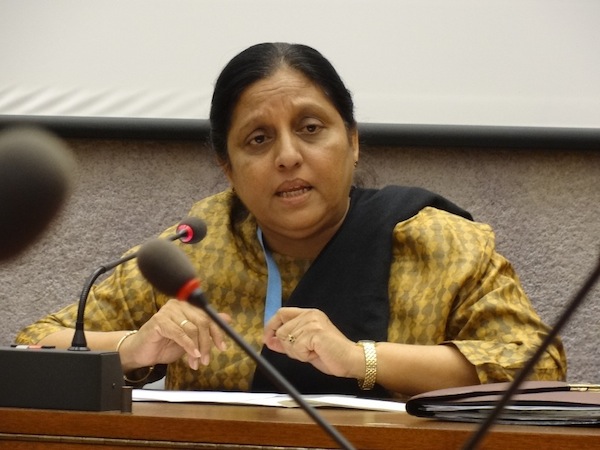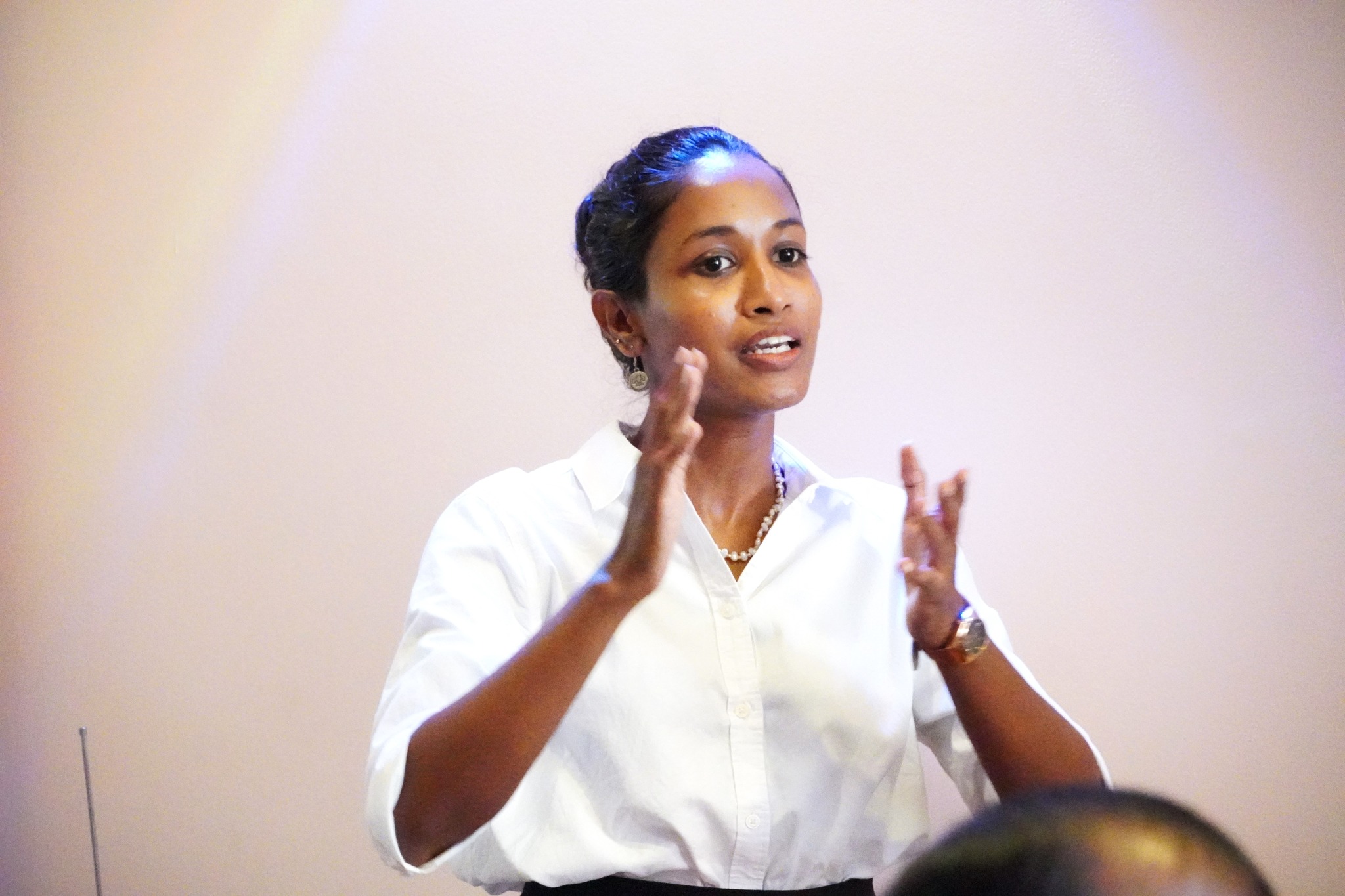 C. Dodawatta
C. Dodawatta
The Evolution of the Journalist’s Role
Knowledge disseminated by the media educates people. Over time, shifts in power dynamics and state reforms have led to the emergence of a new societal structure, yet the state’s evolution has not kept pace with the changing needs of its people. As markets and infrastructures developed, fostering interaction among diverse groups, a pluralistic society emerged. Despite this, education continues to be constrained by narrow religious and nationalistic confines, while society demands a broader contextual development.
This historical backdrop underscores our understanding of “peace and reconciliation.” Citizens are taught in one way, while society evolves differently, creating a persistent conflict between individual education and societal growth. The media faces the challenge of addressing this dichotomy as it attempts to build a peaceful and cohesive society. Traditionally, media has not cultivated citizens suited to a pluralistic society but has instead reinforced petite ethnic and religious identities. In a common society, we must engage with various religious and cultural groups, respecting and interacting with them meaningfully.
Addressing Social Cohesion Through Media
Discussing the theme of “building social cohesion” requires understanding its historical context. This issue is not a recent phenomenon nor one created by a single individual or group. Viewing it as such hinders resolution. A broader understanding facilitates addressing the problem effectively, yet awareness alone is insufficient for building social cohesion. Understanding must translate into actionable solutions.
Journalists in Sri Lanka bear a responsibility for the current lack of peace and reconciliation. Therefore, it’s imperative that we deeply consider how we, as media professionals, can intervene to create a society where ethnic peace is affirmed. The answer lies within the problem itself. If the issue is the lack of education for citizens in a pluralistic society, then it is the media’s responsibility to educate citizens. We must foster citizens who tolerate other cultures, engage in dialogue, and build respectful relationships with diverse groups.
Recognizing our role in promoting peace and reconciliation is crucial. It’s also essential to investigate why the ethnic conflict has persisted for so long. This crisis, deeply rooted in the colonial era, signifies our failure to organize citizens and the state appropriately for the future. Media has contributed to this crisis and can also serve as a tool for its resolution.
Transforming the Journalist’s Role
The ethnic crisis, intensifying in the 1980s, differs from the issues of the 30s and 40s. By the 50s and 60s, the nature of the crisis had changed further. Noted sociologist Newton Gunasinghe described the ethnic problem as “over-determined,” indicating its prominence over all other social issues. He noted that ethnic conflicts dictated political leadership and decisions, including elections and their outcomes.
The nature of the media’s role in this crisis became more pronounced in the 80s and 90s. Unlike previous decades, journalists began engaging in deeper discussions and training on peace and reconciliation. Research and publications on media practices led to a more informed generation of journalists. The media culture evolved, emphasizing diversity and cultural sensitivity.
However, building social cohesion is not solely the media’s responsibility. Political leaders in the North emphasize unresolved transitional justice issues, warning that without a lasting political solution to the ethnic conflict, future crises are inevitable.
Challenges in Building Cohesion
Despite claims of a military solution to the ethnic conflict, events indicate unresolved issues of social cohesion. Journalists must recognize and understand these conditions. Efforts for peace and reconciliation during the war were often thwarted by political actions. Even now, leaders in the North and East complain about unresolved ethnic issues, while Southern leaders make mere suggestions that are not implemented.
How can journalists effectively contribute to building social cohesion? Despite numerous conferences and training sessions, media intervention remains insufficient. We must evaluate the success and failure of these efforts and understand the underlying reasons.
It’s clear that a supportive environment exists for journalists to influence change. Compared to the 80s and 90s, today’s journalists operate with a higher level of awareness and engagement with diverse cultures. Nevertheless, achieving social cohesion requires more than media intervention. It necessitates a comprehensive political solution to the ethnic conflict.
The Need for Capacity Development of the Journalists
“Change begins with oneself.” Journalists must undergo personal transformation. We must critically evaluate the quality of our reporting and ask whether we have acted as agents of peace and reconciliation. The first question journalists should ask themselves is whether their reporting has been of high quality. The second is whether they have achieved this quality effectively. Lastly, we must understand what effective reporting entails and how to achieve it.
Journalists must cultivate a supportive environment for reconciliation and peacebuilding. This involves organizing educational programs to enhance people’s knowledge, contributing to the resolution of the ethnic conflict, transitional justice, peacebuilding, and social cohesion.
The Journalist’s Role in Transitional Justice
Transitional justice, peacebuilding, and democracy are crucial themes determining Sri Lanka’s future. Addressing these themes is essential for social development. Journalists must prepare to face these challenges and take practical steps to address them. Writing about these issues in social media or other platforms can be a professional exercise. Quality reporting is crucial, and collaborative efforts among journalists are necessary.
Discussions among journalists about necessary training and planning are essential. Organizing educational activities can help journalists improve their quality and contribute effectively to a cohesive society. We must move beyond propaganda-driven reporting and focus on human experiences and dignity. By presenting issues based on people’s experiences, journalists can create social sensitivity and exert significant influence.
Ultimately, journalists must think beyond the current framework when addressing social cohesion. The term “social cohesion” has broad implications. Instead of merely using the word “peace,” we should focus on the underlying value system. Observing the challenges faced by a Tamil farmer, not just as a Tamil issue but as a farmer’s issue, can foster social empathy and drive impactful change. Journalists should be sensitive to human dignity, equality, aging, disability, and gender issues, recognizing their role in shaping a just and inclusive society.
In conclusion, the role of journalists in fostering social cohesion is pivotal. By expanding our perspectives, enhancing our understanding, and committing to quality reporting, we can contribute to building a peaceful and cohesive society in Sri Lanka.
(Based on a presentation. Dodawatta is a senior journalist and editor)


